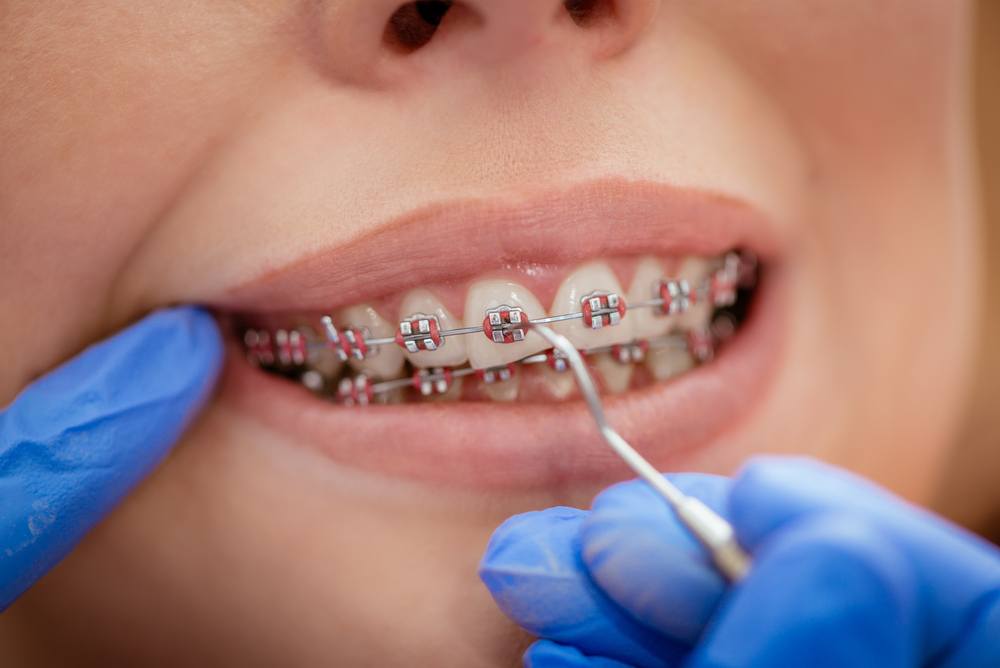How Cumming Orthodontics Addresses Common Braces and Invisalign Issues
Comprehensive Overview to Orthodontics Treatments for Fixing Dental Imbalances
In the world of orthodontics, the journey to accomplishing a perfectly lined up smile entails a myriad of treatments tailored to fix oral imbalances. From typical braces to unnoticeable aligners and also medical alternatives, the area of orthodontics offers a series of remedies to resolve varying degrees of dental irregularities. Comprehending the details of each treatment, including their devices, benefits, and potential drawbacks, is important in making notified choices regarding one's orthodontic therapy. As we browse via the thorough overview to orthodontic treatments for fixing dental misalignments, the complex information of each approach will unfold, losing light on the course towards a practical and harmonious dental alignment.
Orthodontic Procedures Summary

Along with conventional dental braces and clear aligners, orthodontists may likewise advise other treatments like headgear, palatal expanders, or retainers to attend to specific positioning concerns (cumming invisalign). These procedures are customized per client's one-of-a-kind needs and might entail a combination of treatments to accomplish the wanted results. Routine changes and monitoring are important components of orthodontic therapy to guarantee development gets on track and to make any kind of required modifications in the process. By undertaking orthodontic treatments, patients can not only accomplish a straighter grin yet additionally enhance their general oral health and function.
Traditional Braces: How They Function
When thinking about orthodontic treatments for oral misalignments, typical braces stand apart as a reliable technique for correcting teeth placing. Conventional dental braces contain braces, cables, and bands that interact to use constant stress on the teeth, slowly relocating them into the wanted positioning. The brackets are attached to the teeth making use of a special adhesive, and the cords are threaded through the braces. By adjusting the tension of the cables, orthodontists can regulate the direction and pressure applied to each tooth, assisting them right into appropriate placement over time.
One key element of exactly how typical braces work is the process of bone makeover. As stress is related to the teeth with the braces, the bone bordering the teeth is improved to sustain the brand-new tooth positions. This renovation is necessary for the lasting security of the corrected alignment. Individuals will need regular adjustments at the orthodontist's office to guarantee the braces remain to apply the appropriate pressure for efficient teeth activity.
Invisible Aligners: Disadvantages and pros
These clear, custom-made trays are basically undetectable when worn, making them an enticing option for people seeking an extra visually pleasing orthodontic therapy. Individuals can remove the aligners prior to consuming or cleaning their teeth, decreasing the threat of food getting stuck in the device and simplifying the cleansing process.

Surgical Orthodontic Options
Surgical interventions in orthodontics present practical choices for dealing with complicated dental misalignments that may not be efficiently solved via traditional orthodontic therapies. While unnoticeable aligners you can find out more and conventional braces can correct several orthodontic concerns, specific situations require surgical treatment to accomplish ideal results. Surgical orthodontic options are commonly advised for serious malocclusions, considerable jaw discrepancies, and instances where the underlying bone framework needs modification to attain appropriate alignment.
One common medical orthodontic procedure is orthognathic surgery, which entails repositioning the jaws to correct practical issues such as trouble talking or chewing. This surgical procedure is commonly carried out in cooperation with an orthodontist who helps line up the teeth before and after the treatment. Surgical orthodontics may additionally involve treatments to expose influenced teeth, eliminate excess periodontal tissue, or improve the jawbone to create an extra harmonious face profile.
Prior to considering surgical orthodontic alternatives, individuals undergo a detailed analysis to identify the need and potential advantages of such treatments. orthodontist. While surgical treatment might seem daunting, it can substantially improve both the function and appearances of the smile in cases where traditional orthodontic therapies fail
Retainers and Post-Treatment Care

Failure to comply with post-treatment treatment guidelines can result in regression, where the teeth progressively relocate back towards their original positions. Consistent retainer wear, excellent dental health, and routine dental check-ups are crucial for keeping the outcomes accomplished through orthodontic surgery and making certain the lasting security of the fixed dental placement.
Verdict
In final thought, orthodontic procedures offer numerous choices for fixing dental imbalances. Standard braces make use of steel brackets and cords to move teeth into correct placement. Unnoticeable aligners provide an even more discreet alternative however may not appropriate for all cases. Surgical orthodontic choices are go to website offered for extra extreme misalignments. Retainers are commonly utilized post-treatment to maintain the brand-new alignment. On the whole, orthodontic procedures can properly enhance oral health and wellness and visual appearance.
As we browse through the detailed overview to orthodontic procedures for remedying oral misalignments, the complex information of each method will certainly unravel, shedding light on the path towards a unified and functional oral alignment. - cumming orthodontist
One of the most usual orthodontic treatments is the use of braces, which are composed of steel braces and cords that use mild investigate this site pressure to slowly move teeth right into the wanted placement.When considering orthodontic treatments for dental misalignments, standard dental braces stand out as a reliable method for correcting teeth positioning. Furthermore, undetectable aligners might not be ideal for intricate orthodontic concerns that call for even more substantial teeth activity, as they are typically recommended for mild to moderate cases. Retainers are custom-made orthodontic devices designed to hold teeth in their fixed positions after the completion of orthodontic treatment.